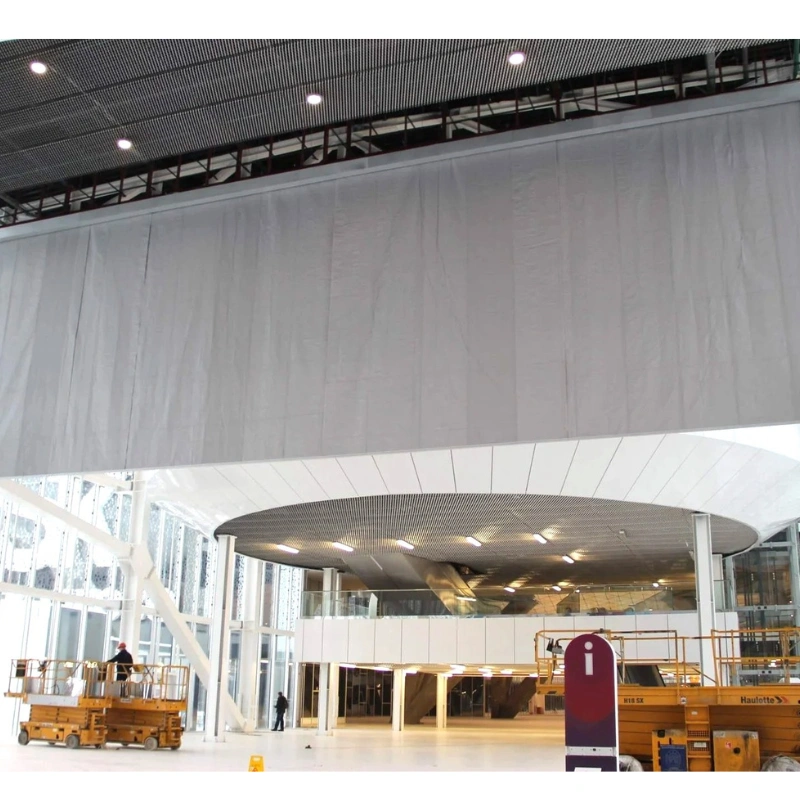Inspection and maintenance of fire curtains

Fire curtains: the basics of maintenance and control
Fire curtains are designed to be used in different environments to prevent the spread of fire and smoke. The curtain closes automatically when a signal is received from the central fire alarm unit or the appropriate message button. The curtain is made using heat-retro reflective fabrics and they can be classified on the basis of fire resistance properties:
- E-class fire curtain, which prevents the spread of flame and hot gases but does not limit heat radiation.
- EW class fire curtain, which prevents the spread of flame and hot gases and reduces heat radiation
intensity to the specified level. - NO-class fire curtain, which ensures full fire and heat insulation, preventing the spread of flame, hot gases and heat radiation.
The use of a fire curtain for purposes other than intended purposes is strictly prohibited as otherwise the protection principle of the curtain, which requires fire resistance and mechanical resistance, is not guaranteed.
Routine inspection and maintenance
As a rule, the holder of a fire curtain and the manufacturer (or his representative) shall enter into a maintenance contract ensuring the continuous operation of the curtains. As a rule, regular inspections and maintenance are performed four times a year, plus possible emergency inspections and maintenance. These works may be carried out by a person authorised or qualified by the manufacturer and the presence of the curtain owner in normal circumstances is not necessary. The maintenance shall examine the whole system and its integrity, including whether, in the meantime, the integrity of the system has been altered in any way. The results of the check are fixed in an act that can be both digital and, for example, paper.
Often, one might wonder what strange things these extraordinary checks and treatments are. Here are some examples:
- Frequent curtain up and down movement in a short period of time for ATS fault messages.
- Damage to the curtain parts or interruption of normal operation.
- Opening the curtain control device by an incompetent person and adding non-designed weak current devices, wires or the like.
The holder of a fire curtain is generally responsible for the proper maintenance of the whole system. The manufacturer shall carry out user training by introducing the performance of the fire curtain and the use of the control shield and specifying who the conditions of maintenance are. As a rule, it also includes who the manufacturer mandates to perform maintenance. It is quite common that, during or after the warranty period, the cardholder asks the carer of an ATS or other weak current installation to maintain it, but often the fact that the caregiver has the training or certificate of competence obtained by the manufacturer, which proves that the caregiver knows and knows the characteristics of the system and is in fact a competent person, is often overlooked. Flameguard products are certified and can only be maintained by manufacturer-trained persons and maintenance partners. If the maintenance technician has not been issued a certificate of competence by the manufacturer, the curtain he has inspected is not correct to be considered serviced and it also terminates the manufacturer's guarantee. The wrong choice of caregiver may result in high repair costs for the holder or owner, or even the replacement of the equipment. To better serve customers, Flameguard's own maintenance team provides curtain maintenance services. More information about fire curtains can be found on the link https://flameguard.ee/toode/tuletokkekardinad and maintenance can be ordered hooldus@flameguard.ee



Thank you for your work. I'm sure we'll turn again.
Automed OÜ